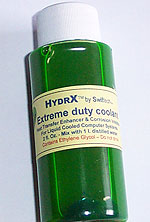Page 3
Putting It All Together
Assembling a watercooling loop attached to your PC is actually really very simple and, we argue, no more involved than attaching a regular aircooled heatsink to your CPU, or installing new fans into your chassis. The challenge is in the layout of your loop. Take your length of tubing and visualise where the blocks, reservoir and radiator will be in your chassis when fully assembled, measuring out the lengths of tubing you'll need. That process of approximating tubing lengths starts the visualisation process for locating the tubing inside your chassis (and outside if needed).
With reservoir and radiator placed, tubing needs to be attached between the components in the loop and the system leak tested. All modern watercooling kits and components will use a virtually leak-proof connection to the tubing but it still pays to make doubly sure so that problems can be caught early. Leak testing should be done without the rest of the computer system running. Most modern watercooling kits coming with a PSU starter that you can use to start the kit (for PSU-powered pumps) for filling and leak testing, without fear or damaging a running system.
The key to fitment and successful leak testing, leading on to a working system, is taking your time and being patient. You want to be deliberate and conscious of what you're doing at every step of the way, be that fitting a waterblock, attaching tubing or priming the system with water and filling it up. Read and follow the instructions carefully, use common sense (as you should when doing anything internal to a PC!) and watercooling just becomes time consuming rather than anything difficult. Be prepared to set aside the best part of a day to make it all come together and work correctly.
Hints and tips

If the watercooling kit you buy supplies anti-algae formula or coolant additive, use it. If you have to attach fans to the radiator manually, make sure they're blowing in the right direction. Trust push-fit connectors even your instinct says otherwise. Make sure your scissors or knife are sharp for accurate cuts of tubing. If you're creating a system from separate parts make sure they all match the inside or outside diameter of the tubing you're using.









